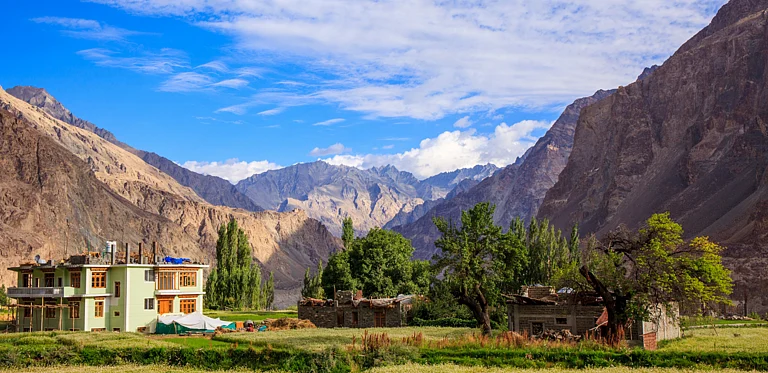In the Indian Sundarbans, disaster comes broadly in two ways. One is the cyclones and associated storm surges that devastate the region in a matter of an hour or so. The other is what local residents call ‘slow poisoning’ – increasing salinity of soil and water hurting agriculture and fish production and creating health hazards.
Climatic changes have worsened all factors – rising sea-surface temperature in the Bay of Bengal is increasing the severity of cyclones, even though the overall frequency of cyclonic storms has reduced; and the rising sea level is increasing soil and water salinity, impacting the very composition of the mangrove forests and the livelihood of the people living in this deltaic landscape.
“Progressive salinisation of rivers and groundwater has resulted in the decline of available fresh drinking water. This situation will likely have numerous adverse effects on mother-child health, including dehydration, hypertension, prenatal complications, and increased infant mortality,” said a 2020 World Bank report, titled, ‘Coping with Climate Change in the Sundarbans.’
According to the report, many parts of the region will reach near ocean-level salinity (32 ppt) by 2050, which is likely to cause shortages in drinking water, water scarcity for dry-season irrigation, and significant changes in coastal aquatic ecosystems in the core forest and reclaimed areas. The lives and livelihood of poor households, including the region’s most vulnerable population segments (women, children, and the elderly) were likely to be affected the most, it said.
The report also warned that fragmentation of the Sundarbans landscape due to erosion and inundation will increase the loss of wildlife habitat (for tigers and venomous snakes, for example), which can, in turn, increase the risk of human-wildlife conflicts.
This is a matter of serious concern, considering that the Sundarbans region records one of highest number of human-tiger conflicts among conservation landscapes around the world. Besides, several tiger-inhabited islands have been found to be eroding faster than the human-inhabited islands in the recent decades, causing concerns about tiger habitat loss.
The region is quite densely populated, with over 45 lakh people living in 54 islands.
According to general and geriatric physician Dhires Kumar Chowdhury, increasing salinity is causing a range of health hazards, including acid peptic disorder, chronic fungal infections, oral fungal thrush, infective discharge from ears like otitis media, eye complications like itching and infections, hair fall and dental decay.
“Long-term exposure to high salinity has had a negative impact on fertility and there has been an increase in genital infections like vulvovaginitis, urethral infections including urinary tract infection. High sodium consumption also increases blood pressure,” said Chowdhury, whose NGO Banchbo Sociocultural Association operates a school, a free geriatric OPD and women’s empowerment initiatives at Pathar Pratima block in the Sundarbans.
He added that genital infections had become common but people are often hesitant in revealing them. Besides, the severe impact on socioeconomic conditions are passively triggering depressive disorders.
A Complex System
Being a coastal region, Sundarban faces a direct threat of permanent inundation of large swathes of land due to sea level rise. The threat perception is higher than many other coastal regions in India because the rise in sea level in the Bay of Bengal has been estimated to be higher than in the Indian ocean and the Arabian sea. The effect of sea level rise appears even higher because the under-water land-level has been rising, too. However, since the scientists do not yet have any reliable data on the extent of land elevation, it has been difficult to determine the exact extent of sea level rise.
Nevertheless, such permanent inundation is still not a massive threat for the Sundarbans region, as of now, as there is a complex system at play that leads to both accretion and erosion. At a time the Indian Sundarbans is losing land in its southern and western parts, it is gaining land in the northern part.
Explaining the natural system, Sunando Bandyopadhyay, a professor of geography at Calcutta University and co-author of the paper mentioned above, told Outlook that Sundarban being a tide-dominated delta, the tidal force is more powerful than the fluvial (river) and wave forces.
“The silt that the tides bring with them are getting deposited in the creeks and canals and open fronts of islands (without embankments or with breached ones) because the tidal water is gushing in at a higher speed than they are retreating. The waves are not able to carry all that silt back. As long as this siltation happens at a pace matching sea level rise, Sundarban islands will continue to accrete vertically and keep up to the rising sea level, even if it suffers from some lateral loss due to erosion,” said Bandyopadhyay, who has been studying the geomorphological changes in the region for about three decades.
Bankim Hazra, the Sundarban development minister in the West Bengal government, said that the government is taking up a set of measures to combat the impacts of climate change.
“We know that we can expect more intense cyclones. Therefore, we are prepared with our evacuation plans. We have a sufficient number of cyclone shelters and we are in the process of strengthening the embankments. To deal with increasing soil salinity, we are encouraging farmers to grow salt-tolerant rice varieties. We are even distributing such seeds for free,” he said.
Local residents, however, said that salt-tolerant rice varieties have not been popular, as they neither yield as much as the common varieties nor fetch a good price in the market. The impact on the other major economic produce of the region, fish, has resulted in steady flow of seasonal migration to India’s southern coastal states in search of jobs in the marine fishing industry. The increasing economic stress due to repeated extreme weather events and low productivity also resulted in a spike in child trafficking, especially after the cyclone Aila of 2009 that caused havoc.
The impact is not limited to the human population, as changing salinity level is causing some flora and fauna to go extinct and some others to mushroom.
“When we are talking about protecting the Sundarbans, we have to think of protecting not only the people who live here, but also this ecosystem and this biodiversity,” said Punyasloke Bhaduri, a professor at IISER Kolkata. He pointed out that the region is of huge significance not only because the world’s only mangrove tigers, “perhaps the most majestic of all tigers”, live here, but also because this is home to two endangered dolphin species – the Gangetic dolphin and the Irrawaddy dolphin.
“This is the only mangrove forest in the world where you find a prehistoric animal, Horseshoe crabs, a contemporary of dinosaurs,” he said, adding, “When we think of protecting Sundarbans, we have to consider the whole ecosystem, the blue economy and take a multi-pronged, multi-disciplinary approach. Nature-based approaches are ideal.”
He said that Sundarbans region also needed an island-specific approach, as the problems in each island are different.


























